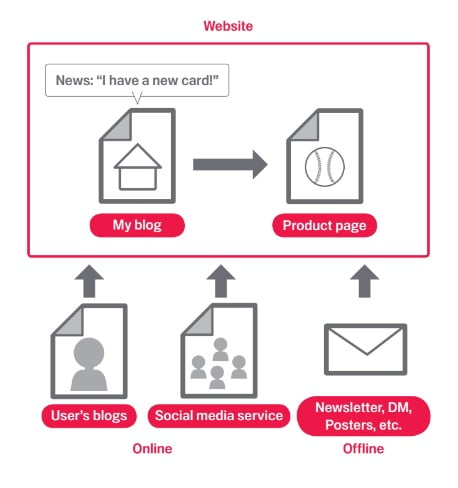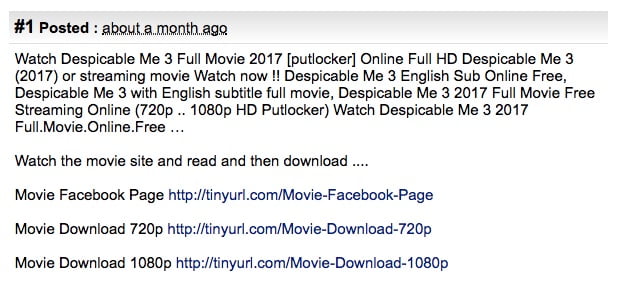Optimize your seo content
Optimize your seo content and make your site interesting and useful.
Creating compelling and useful content will likely influence your website more than any of the other factors discussed here. Users know good content when they see it and will likely want to direct other users to it. This could be through blog posts, social media services, email, forums, or other means.
Organic or word-of-mouth buzz is what helps build your site’s reputation with both users and Google, and it rarely comes without quality content.

Know what your readers want (and give it to them)
Think about the words that a user might search for to find a piece of your content. Users who know a lot about the topic might use different keywords in their search queries than someone who is new to the topic. For example, a long-time football fan might search for “fifa”, an acronym for the Fédération Internationale de Football Association, while a new fan might use a more general query like “football playoffs”. Anticipating these differences in search behavior and accounting for them while writing your content (using a good mix of keyword phrases) could produce positive results. Google Ads provides a handy Keyword Planner that helps you discover new keyword variations and see the approximate search volume for each keyword. Also, Google Search Console provides you with the top search queries your site appears for and the ones that led the most users to your site in the Performance Report.
Consider creating a new, useful service that no other site offers. You could also write an original piece of research, break an exciting news story, or leverage your unique user base. Other sites may lack the resources or expertise to do these things.
Write easy-to-read text
Users enjoy content that is well written and easy to follow.
Avoid:
- Writing sloppy text with many spelling and grammatical mistakes.
- Awkward or poorly written content.
- Embedding text in images and videos for textual content: users may want to copy and paste the text and search engines can’t read it.
Organize your topics clearly
It’s always beneficial to organize your content so that visitors have a good sense of where one content topic begins and another ends. Breaking your content up into logical chunks or divisions helps users find the content they want faster.
Avoid:
- Dumping large amounts of text on varying topics onto a page without paragraph, subheading, or layout separation.
Create fresh,
New content will not only keep your existing visitor base coming back, but also bring in new visitors.
Avoid:
- Rehashing (or even copying) existing content that will bring little extra value to users.
- Having duplicate or near-duplicate versions of your content across your site.
Learn more about duplicate content.
Optimize content for your users,
Designing your site around your visitors’ needs while making sure your site is easily accessible to search engines usually produces positive results.
Avoid:
- Inserting numerous unnecessary keywords aimed at search engines but are annoying or nonsensical to users.
- Having blocks of text like “frequent misspellings used to reach this page” that add little value for users.
- Deceptively hiding text from users, but displaying it to search engines.
Act in a way that cultivates user trust
Users feel comfortable visiting your site if they feel that it’s trustworthy.
A site with a good reputation is trustworthy. Cultivate a reputation for expertise and trustworthiness in a specific area.
Provide information about who publishes your site, provides the content, and its goals. If you have a shopping or other financial transaction website, make sure you have clear and satisfying customer service information to help users resolve issues. If you have a news sites, provide clear information about who is responsible for the content.
Using appropriate technologies is also important. If a shopping checkout page doesn’t have a secure connection, users cannot trust the site.
Make expertise and authoritativeness clear
Expertise and authoritativeness of a site increases its quality. Be sure that content on your site is created or edited by people with expertise in the topic. For example, providing expert or experienced sources can help users understand articles’ expertise. Representing well-established consensus in pages on scientific topics is a good practice if such consensus exists.
Provide an appropriate amount of content for your subject
Creating high quality content takes a significant amount of at least one of the following: time, effort, expertise, and talent/skill. Make sure content is factually accurate, clearly written, and comprehensive. So, for example, if you describe your page as a recipe, provide a complete recipe that is easy to follow, rather than just a set of ingredients or a basic description of the dish.
Avoid:
- Providing insufficient content for the purpose of the page.
Avoid distracting advertisements
We expect advertisements to be visible. However, don’t let the advertisements distract users or prevent them from consuming the site content. For example, advertisements, supplement contents, or interstitial pages (pages displayed before or after the content you are expecting) that make it difficult to use the website. Learn more about this topic.
Avoid:
- Putting distracting advertisements on your pages.
Use links wisely
Write good link text
Link text is the visible text inside a link. This text tells users and Google something about the page you’re linking to. Links on your page may be internal—pointing to other pages on your site—or external—leading to content on other sites. In either of these cases, the better your anchor text is, the easier it is for users to navigate and for Google to understand what the page you’re linking to is about.

With appropriate anchor text, users and search engines can easily understand what the linked pages contain.
Choose descriptive text
Write anchor text that provides at least a basic idea of what the page linked to is about.
Avoid:
- Writing generic anchor text like “page”, “article”, or “click here”.
- Using text that is off-topic or has no relation to the content of the page linked to.
- Using the page’s URL as the anchor text in most cases, although there are certainly legitimate uses of this, such as promoting or referencing a new website’s address.
Write concise text
Aim for short but descriptive text-usually a few words or a short phrase.
Avoid:
- Writing long anchor text, such as a lengthy sentence or short paragraph of text.
Format links so they’re easy to spot
Make it easy for users to distinguish between regular text and the anchor text of your links. Your content becomes less useful if users miss the links or accidentally click them.
Avoid:
- Using CSS or text styling that make links look just like regular text.
Think about anchor text for internal links too
You may usually think about linking in terms of pointing to outside websites, but paying more attention to the anchor text used for internal links can help users and Google navigate your site better.
Avoid:
- Using excessively keyword-filled or lengthy anchor text just for search engines.
- Creating unnecessary links that don’t help with the user’s navigation of the site.
Be careful who you link to
You can confer some of your site’s reputation to another site when your site links to it. Sometimes users can take advantage of this by adding links to their own site in your comment sections or message boards. Or sometimes you might mention a site in a negative way and don’t want to confer any of your reputation upon it. For example, imagine that you’re writing a blog post on the topic of comment spamming and you want to call out a site that recently comment spammed your blog. You want to warn others of the site, so you include the link to it in your content; however, you certainly don’t want to give the site some of your reputation from your link. This would be a good time to use nofollow.
Another example when the nofollow attribute can come handy are widget links. If you are using a third party’s widget to enrich the experience of your site and engage users, check if it contains any links that you did not intend to place on your site along with the widget. Some widgets may add links to your site which are not your editorial choice and contain anchor text that you as a website owner may not control. If removing such unwanted links from the widget is not possible, you can always disable them with nofollow. If you create a widget for functionality or content that you provide, make sure to include the nofollow on links in the default code snippet.
Lastly, if you’re interested in nofollowing all of the links on a page, you can add the tag <meta name="robots" content="nofollow"> inside the <head> tag for the page. You can find more details about robots meta tags in our documentation.
Combat comment spam with nofollow
To tell Google not to follow or pass your page’s reputation to the pages linked, set the value of the rel attribute of a link to nofollow or ugc. Nofollowing a link means adding rel="nofollow" or a more specific attribute such as ugc inside the link’s anchor tag, as shown here:
<a href="http://www.example.com" rel="nofollow">Anchor text here</a>
or:
<a href="http://www.example.com" rel="ugc">Anchor text here</a>
When would this be useful? If your site has a blog with public commenting turned on, links within those comments could pass your reputation to pages that you may not be comfortable vouching for. Blog comment areas on pages are highly susceptible to comment spam. Nofollowing these user-added links ensures that you’re not giving your page’s hard-earned reputation to a spammy site.

Automatically add nofollow to comment columns and message boards
Many blogging software packages automatically nofollow user comments, but those that don’t can most likely be manually edited to do this. This advice also goes for other areas of your site that may involve user-generated content, such as guest books, forums, shout-boards, referrer listings, etc. If you’re willing to vouch for links added by third parties (for example, if a commenter is trusted on your site), then there’s no need to use nofollow on links; however, linking to sites that Google considers spammy can affect the reputation of your own site. The Google Search Central documentation has more tips on avoiding comment spam, for example by using CAPTCHAs and turning on comment moderation.


